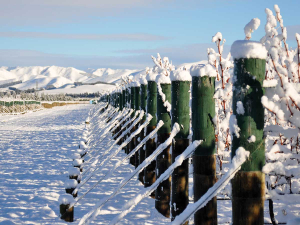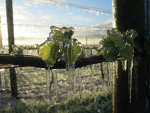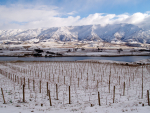Winter certainly arrived early in 2024, with the coldest May for nearly two decades and the first month with below average temperatures in four years. That included record breaking cold and a significant number of frosts, which drove down the mean temperature in most regions.
June has given some respite, with a return to warm conditions and record-breaking temperatures in Hawke’s Bay. July has been reasonably dull and cool at times in the east. El Niño has receded and an early shift to cooler than average sea surface temperatures across the equatorial Pacific Ocean is usually the signal that La Niña is on the way. It is looking more likely that La Niña will develop during spring, although the commentary from around the world suggests this is not locked in yet. Other climate drivers such as the Southern Annular Mode and Indian Ocean Dipole are hovering around neutral and not giving away any teasers about how the remainder of 2024 will play out. If La Niña does arrive during spring, then we may see an early period of westerly conditions across New Zealand that give way to a north-northeast flow later in September or early October.
Spring and Inversions
Spring is approaching with the promise of milder weather, but we know the risks spring frost brings. Even though the onset of the growing season varies from region to region, frost is still a risk to most growing regions across New Zealand. Last year was a timely reminder of this, with significant frosts recorded as far north as South Auckland in early October, and late November frosts recorded across much of Marlborough.
Although there are several methods of mitigating the risk of frost on a vineyard, two of the most successful and widely used are helicopters and frost fans. Both of these methods involve mixing milder air that is found several metres above the surface on clear, settled nights. As a parcel of air cools on a settled night it becomes denser and heavier and can stratify. This heavier air at the surface becomes colder than the air above and the temperature of the air above the surface is warmer with height. The difference between the surface temperature and the temperature at a higher elevation is the inversion. Utilising potentially milder air from 10-20 metres above a vineyard can be an extremely effective method of mitigating the risk of frost. However the quality or strength of an inversion can vary due to the topography of the vineyard and the surrounding region, as well as the current synoptic conditions or weather patterns.
A wide open and generally level surface provides the best chance for air to stratify as it cools. Areas that are on hillsides or surrounded by hills and mountains are the sources of drifts that develop. There can be multiple drifts present in areas surrounded by complex topography and these drifts can create a more turbulent airflow over a vineyard that leads to a weaker inversion. The quality of an inversion can be extremely localised and a strong inversion in one part of a region is often completely different to the inversion observed just a few kilometres away. The best method of understanding what the inversion over any vineyard or future development is still an intensive climate study.
Outlook for August and September
Gisborne/Hawke's Bay
Warm north to northwest winds are likely to return at times and could make late August feel like spring has arrived early. Rainfall totals have been elevated at times, but rainfall could reduce from late winter and through early spring under a west to northwest flow. Early spring frosts are possible with drier and clear conditions, especially on the back of any southwest changes that break up the northwest flow.
Wairarapa
The lower North Island is susceptible to stronger than average winds when the northwesterlies arrive. August and early September may see the return of stronger winds. This may help with milder than average temperatures at times although there is still a risk of frost. Rainfall is likely to be near or even a little below average through early spring.
Nelson
Temperatures are likely to remain above average, helped by more frequent northwest winds. Rainfall is likely to run close to average, with fronts moving in from the northwest producing rain for the upper South Island. There will still be some risk of frost on the back of southwest changes.
Marlborough/North Canterbury
Temperatures are likely to run near or above average along the east coast of the South Island through late winter and into spring. Mild northwesterlies are likely to bring an early return to 20C+ afternoons from late August or early September. The risk of frost is most likely after any southwest changes. With faster moving systems under a west to northwest flow, the chance of frost becomes more reliant on the timing of clear skies and incoming ridges of high pressure. Rainfall is likely to run near or a little below average through early spring.
Central Otago
Temperatures are likely to be near or above average. Northwest winds may strengthen in late August and early September. The frost risk may be reduced at times as faster moving weather systems move across the lower South Island. As with Marlborough and Canterbury, the timing of clearances and incoming high pressure will be important when determining the chance of frost. Rainfall totals are likely to be close to average through late winter and early spring.
James Morrison runs Weatherstation Frost Forecasting: weatherstation.net.nz














